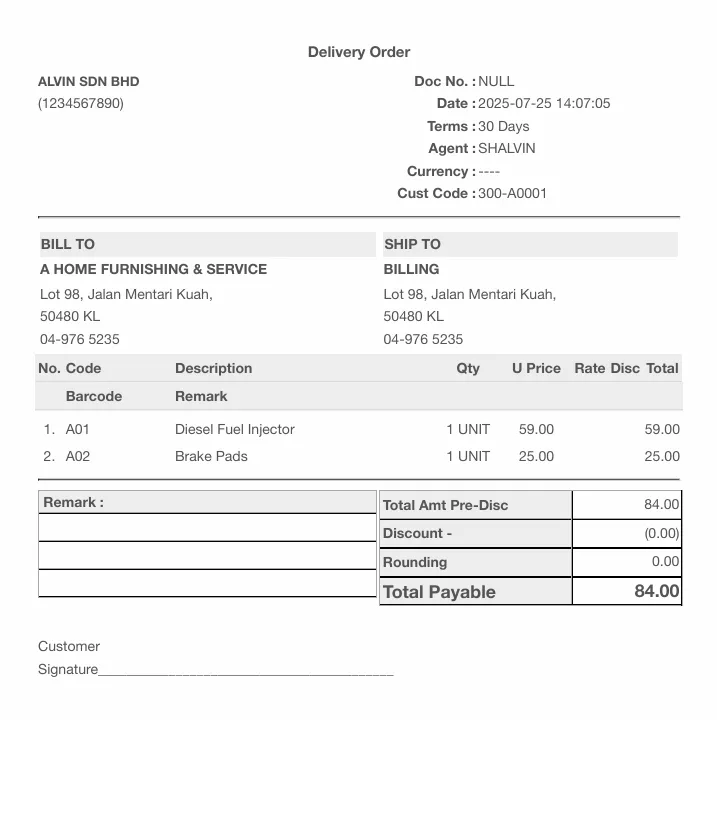
Author: Christopher Yip
Date Published: 29 May 2025
How to Use Sales and Accounting Data to Drive Smarter Business Decisions
In today's data-rich environment, businesses are sitting on a goldmine of information. Yet, many small and medium-sized enterprises (SMEs) fail to leverage this data effectively. One of the most overlooked resources? The intersection of sales and accounting data. When used strategically, these datasets can reveal powerful insights that inform smarter, faster, and more confident decisions.
This guide explores how businesses particularly wholesalers and sales-driven companies can unlock the true value of their sales and accounting data to improve operations, customer retention, profitability, and strategic planning.
Table of Contents
1. Why Sales and Accounting Data Belong Together
2. Forecasting More Accurately with Combined Data
3. Identifying Top-Performing Products and Customers
4. Streamlining Operational Efficiency
5. Improving Cash Flow Management
6. Enhancing Strategic Planning and Growth
7. Building a Culture of Data-Driven Decision Making
8. Conclusion
Why Sales and Accounting Data Belong Together
Sales and accounting are traditionally managed in silos. Sales teams focus on closing deals and boosting revenue, while accountants focus on compliance, expenses, and financial reports. But when these two departments share information, the result is a 360-degree view of business performance. Linking customer invoices with specific sales reps or marketing campaigns, for example, helps determine which sales activities directly lead to revenue and profitability.
Pairing accounting data (like cost of goods sold) with sales performance lets you calculate gross profit margins in real time, helping you understand which products or reps are generating the most value. This also helps you align receivables with customer buying cycles and spot which clients are high value but slow-paying, so you can adapt your credit terms or follow-up strategies accordingly.
Forecasting More Accurately with Combined Data
Forecasting isn’t just a guessing game, it’s a discipline that blends historical insight with real-time intelligence. When sales and accounting data come together, your projections are grounded in actual performance, not assumptions.
• Use historical sales with seasonal patterns: By analyzing past performance across months or quarters, businesses can identify trends and plan inventory, staffing, and campaigns accordingly.
• Factor in average payment delays: Your sales forecast might look strong, but if customers typically pay 30 - 45 days later, your cash position could be vulnerable. Including payment timelines into forecasting helps avoid cash flow pitfalls.
• Focus on profitability, not just revenue: It’s easy to chase top-line growth, but sustainable success comes from knowing which sales drive long-term profit. Integrating COGS and margin analysis reveals the true value of your deals.
Identifying Top-Performing Products and Customers
Not all revenue is created equal. Your top-selling product might be generating more returns or shipping costs than it's worth. Similarly, a customer placing large orders could be chronically late with payments, tying up your cash.
To improve business intelligence:
• Rank products by net profit contribution: A product with modest sales but high margins may be more valuable than your volume leader.
• Segment customers based on total value: Consider not just the revenue they bring in, but their consistency, payment reliability, and support needs. A customer with smaller but frequent, timely purchases may be more valuable than a large client who creates administrative overhead.
Analyzing these metrics manually can be time-consuming, but tools like SalesHero can help automate product and customer performance insights, giving you actionable data at a glance.
Streamlining Operational Efficiency
When teams work with disconnected systems, inefficiencies follow. Salespeople might not know when a client has overdue invoices, and accountants may have to chase down missing paperwork or rely on manual entries. These gaps cause delays, errors, and lost opportunities.
One solution is to automate workflows: generate invoices directly from sales entries, allow shared visibility of payment status, and maintain a unified dashboard across departments. This not only reduces time spent on admin tasks, but ensures everyone from sales reps to finance managers is working from the same data source.
Creating these efficiencies doesn’t require a massive overhaul. Even simple integrations between CRM and accounting tools can drive immediate gains.
SalesHero offers seamless integration with popular accounting systems, enabling real-time syncing between sales and finance. This allows businesses to eliminate duplicate data entry, automate invoicing, and maintain clean, accurate financial records all from a single platform.
Improving Cash Flow Management
Cash flow issues often stem from mismatched timing between sales and actual revenue receipt. Your team may be celebrating a record month of deals, but if most clients delay payment, your bank account tells a different story.
Integrating sales pipeline data with accounting records helps you:
• Predict when payments will arrive, based on sales stages and historic payment behavior.
• Prioritize fast-paying clients or structure incentives for early payment.
• Time major expenses, like inventory purchases or equipment upgrades, to match expected cash inflows.
Instead of guessing, you’ll be making cash-related decisions with clarity and confidence.
Enhancing Strategic Planning and Growth
With better data comes better strategy. Combining your sales and accounting information reveals what’s working, what isn’t, and where the highest return lies. You can evaluate the ROI of different campaigns, identify profitable customer segments, and make data-driven decisions on pricing or expansion.
For example, instead of just seeing which campaign brought in the most leads, you can trace those leads through to payment, returns, and margin. This shows whether your efforts actually paid off and if not, where they fell short.
This is especially critical for SMEs looking to scale. Growth without profitability strains cash and resources. Growth with data, however, is scalable.
Building a Culture of Data-Driven Decision Making
Even the best tools won’t deliver results if teams don’t embrace a data-first mindset. Businesses should invest in training staff to interpret dashboards, schedule regular reviews across departments, and create KPIs that reflect both sales and financial goals.
When decisions are made based on measurable outcomes not gut feeling or outdated habits everyone wins. Salespeople become more strategic, finance teams become more proactive, and leadership has a clear picture of performance.
Creating this culture takes time, but it’s a foundational shift that prepares businesses for long-term success.
Conclusion
Sales and accounting data are two sides of the same coin. When combined, they unlock insights that neither can offer alone. For growing businesses, especially in wholesale or B2B sales, integrating these datasets can mean the difference between reactive chaos and strategic clarity.
Platforms like SalesHero make it easier to align your sales pipeline with financial insights. Whether you're looking to improve cash flow, identify high-value customers, or simply reduce admin burdens, unified data is the key.
FAQs
Why should I integrate sales and accounting data instead of managing them separately?
Managing them together gives you a more complete picture of your business performance. While sales data shows how much revenue you're bringing in, accounting data reveals your costs, margins, and cash flow. Combining both enables you to make smarter decisions based on profit, not just revenue.
I’m a small business owner. Is this level of integration too complex or expensive?
Not at all. Tools like SalesHero are built for SMEs and offer affordable, plug-and-play integration with popular accounting systems. You don’t need a full IT department just a willingness to streamline your data.
Will integrating sales and accounting slow down my current workflow?
On the contrary, it reduces manual entry, lowers error rates, and allows different teams (sales, finance, operations) to work from the same data source. This improves transparency, saves time, and leads to faster decision-making.



